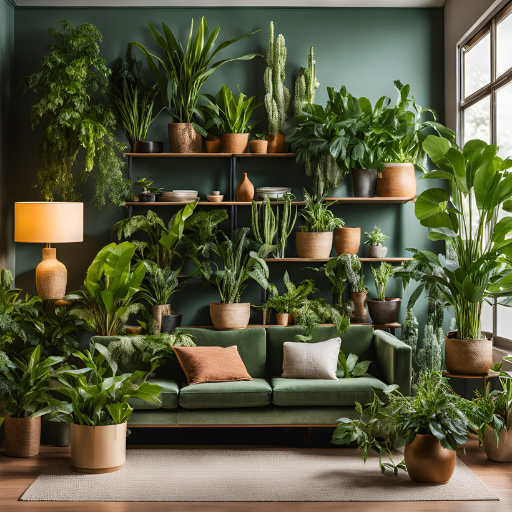Low-Light Indoor Plants; In today’s fast-paced world, many of us seek solace in our homes, desiring a touch of nature to brighten our living spaces. Indoor plants are a fantastic way to achieve this, providing not just aesthetic appeal but also numerous health benefits. However, not everyone has access to ample natural light, making low-light indoor plants a perfect choice for creating a vibrant indoor garden. In this blog, we’ll explore 22 low-light indoor plants that can thrive in dim environments, bringing life and beauty into your home.
Benefits of Having Indoor Plants
Air Quality Improvement
Indoor plants act as natural air purifiers. They absorb carbon dioxide and release oxygen, while also filtering out toxins like formaldehyde and benzene. Research has shown that having plants in your living space can significantly improve air quality, making it healthier for you and your family.
Mental Health Boost
Plants contribute positively to mental health. Studies indicate that being around greenery can reduce stress levels, enhance mood, and increase productivity. The act of caring for plants can also provide a sense of purpose and satisfaction.
Aesthetic Appeal
Beyond health benefits, plants enhance the aesthetic of your home. They add color, texture, and life to otherwise dull spaces. Whether placed on a windowsill, shelf, or floor, plants can transform a room and create a more inviting atmosphere.
List of 22 Low-Light Indoor Plants
Here’s a curated list of 22 low-light indoor plants that can bring life to your home:
1. Snake Plant (Sansevieria trifasciata)
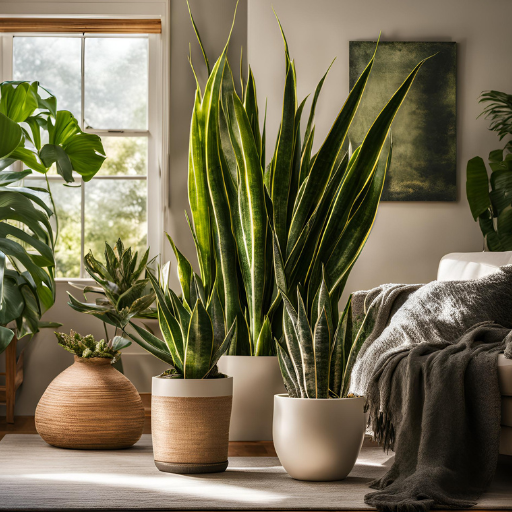
Snake plants are perfect for modern interiors, thanks to their upright, sword-like leaves and architectural presence. They fit beautifully in minimalist spaces, home offices, or as corner fillers in living rooms. Their ability to survive with minimal water makes them excellent for frequent travelers. The plant also improves indoor air by filtering toxins like formaldehyde and benzene. Its bold shape and variegated leaves create a dramatic focal point with little effort.
Its upright form looks especially striking in geometric or metallic planters. Snake plants are often placed in entryways or hallways to welcome guests with a touch of greenery. In Feng Shui, they’re believed to cut through stagnant energy and offer protective benefits. Group them with shorter, bushier plants for contrast and height variation.
- Care Tips: Water every 2-6 weeks depending on humidity; thrives in dry soil.
- Benefits: Extremely hardy, filters toxins, and can tolerate neglect.
2. Pothos (Epipremnum aureum)
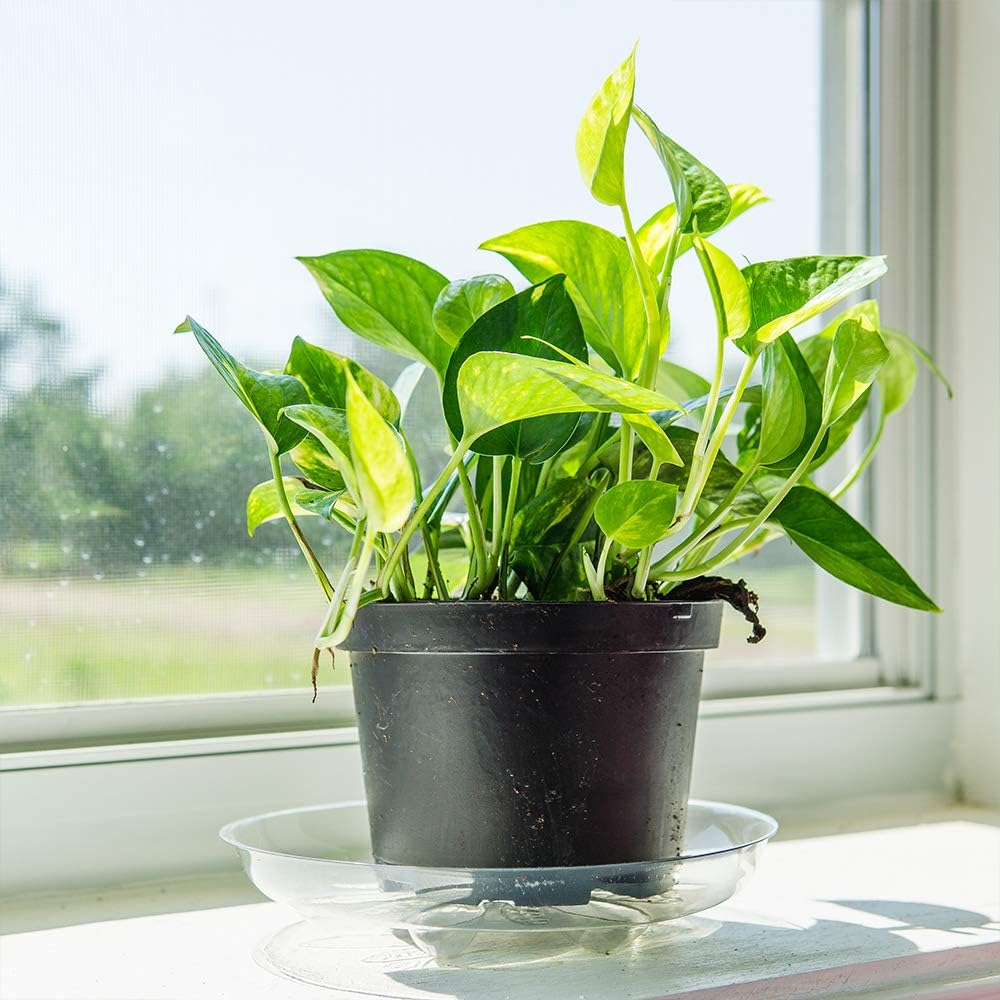
Pothos is a popular choice for shelves, hanging baskets, or plant walls because of its cascading vines. It can grow several feet long, creating an elegant, flowing green curtain. The leaves are often variegated with yellow, white, or light green, adding visual interest. It’s low maintenance, making it ideal for beginners or busy plant lovers. This adaptable vine thrives in bathrooms and bedrooms with filtered or artificial light.
Pothos pairs beautifully with macramé hangers or rustic wooden shelves. Their trailing vines soften edges and add depth to gallery walls or window ledges. Known as “devil’s ivy,” they remain green even in complete darkness for extended periods. They also root easily in water, making them ideal for propagation projects.
- Care Tips: Water when the soil dries out; adaptable to different light conditions.
- Benefits: Can trail or climb, known for its beautiful heart-shaped leaves.
3. ZZ Plant (Zamioculcas zamiifolia)
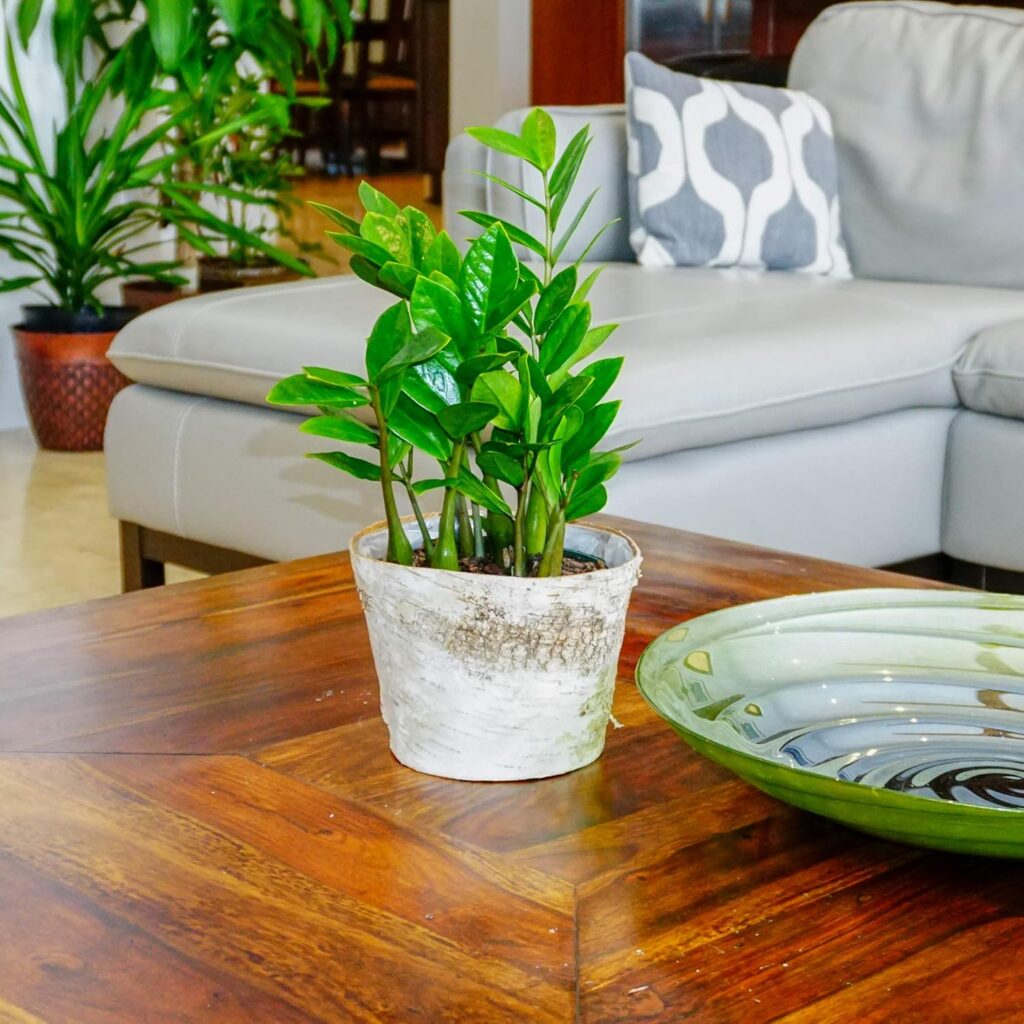
The ZZ plant’s glossy, waxy leaves make it look perpetually polished and well-maintained. Its upright growth habit suits tight corners or narrow entryways. It’s one of the few plants that thrives under fluorescent lights, making it perfect for offices. The plant’s drought tolerance and pest resistance make it virtually indestructible. It’s an excellent gift for anyone new to plant care or prone to forgetful watering.
The ZZ plant’s sculptural quality makes it a chic addition to modern or Scandinavian interiors. It pairs well with other plants like snake plants or rubber plants that share similar low-care requirements. ZZ plants are also said to bring financial luck in some cultures. Their slow growth means they won’t outgrow their space quickly, making them great for small apartments.
- Care Tips: Water sparingly; ideal in low-light and dry conditions.
- Benefits: Drought-resistant and features shiny, dark green leaves.
4. Spider Plant (Chlorophytum comosum)
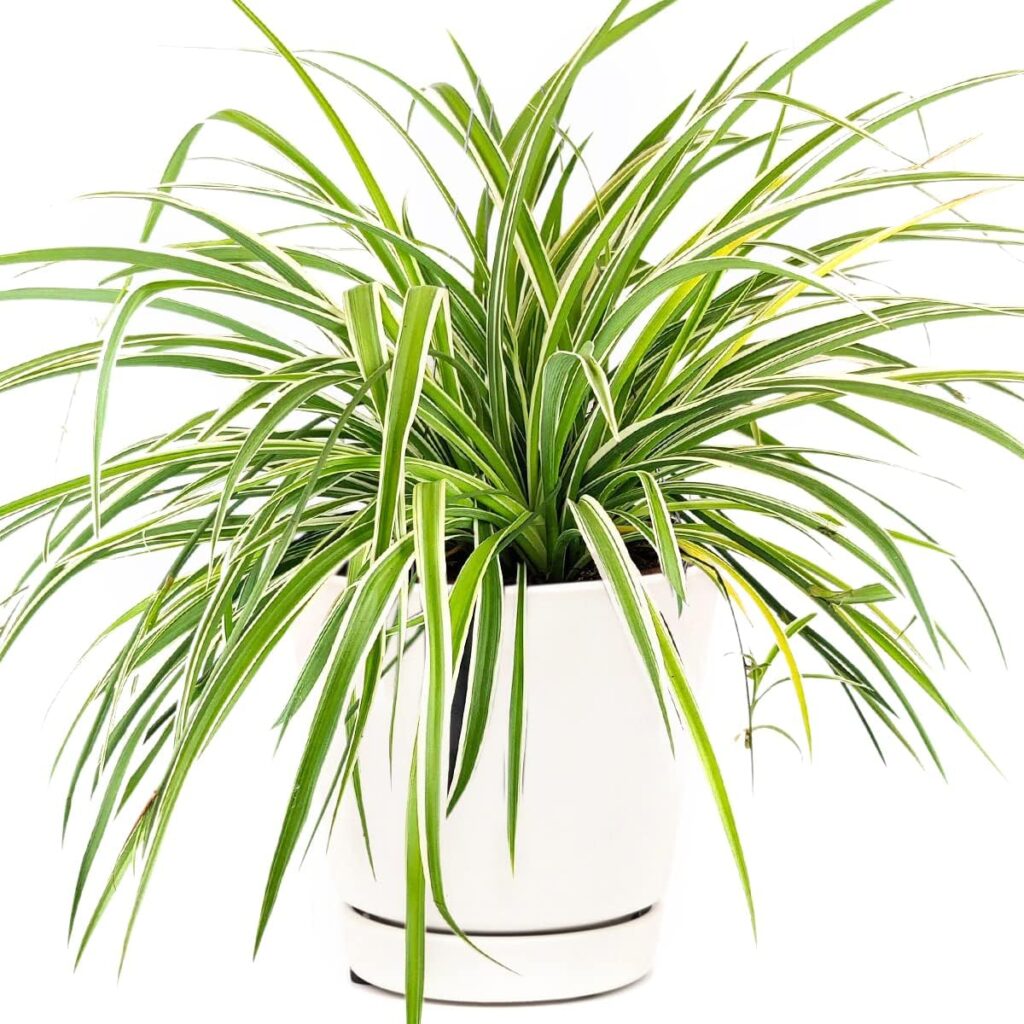
Spider plants bring a fresh, playful energy to any room with their striped, arching leaves. Their baby offshoots or “spiderettes” hang down like mini decorations, making them popular in hanging pots. These offshoots can easily be propagated into new plants, offering both charm and utility. They’re especially great in kids’ rooms or kitchens due to their bright and lively look. Pet owners also love them since they’re non-toxic to cats and dogs.
Spider plants look especially lush in hanging baskets or elevated pots where their offshoots can cascade downward. They work well in kitchens or laundry rooms with indirect natural light. Their easy propagation makes them popular for plant swaps or DIY gifts. As an added bonus, they can help reduce indoor air pollutants like carbon monoxide.
- Care Tips: Keep soil slightly moist; tolerates a variety of conditions.
- Benefits: Safe for pets and produces offshoots that can be propagated.
5. Peace Lily (Spathiphyllum spp.)
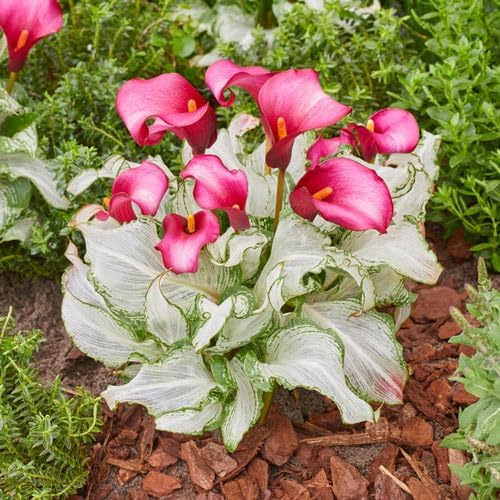
Peace lilies offer a touch of elegance with their graceful white blooms that contrast beautifully against dark green leaves. They bring a spa-like calm to bedrooms and reading nooks. The plant is sensitive to water needs, drooping when thirsty and reviving after watering, which helps beginners learn watering schedules. Their air-purifying qualities make them especially valuable in small apartments. With consistent care, they bloom several times a year indoors.
Peace lilies are often used in memorial arrangements due to their symbolic association with peace and healing. Their lush foliage complements both minimalist and traditional decor. They are particularly sensitive to fluoride in tap water, so distilled water is best for sensitive plants. Place them in bedrooms or living areas for a calming atmosphere.
- Care Tips: Water when the soil feels dry; prefers indirect light.
- Benefits: Beautiful white flowers and effective in purifying air.
6. Philodendron (Philodendron spp.)
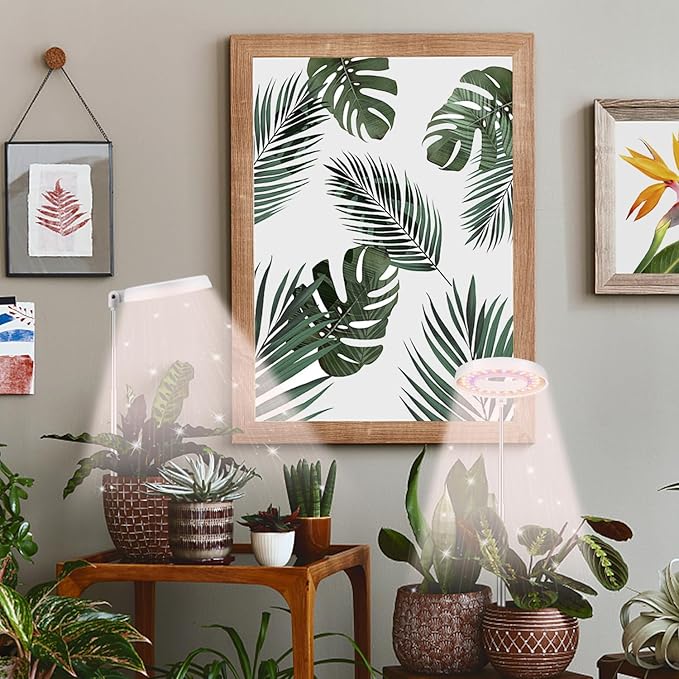
Philodendrons come in vining and upright varieties, making them versatile for shelves, plant stands, or even as a floor plant. Their heart-shaped or lobed leaves add a soft, tropical feel to your decor. They grow quickly, allowing you to enjoy lush greenery without a long wait. These plants also adapt well to various containers, from classic ceramic pots to hanging baskets. Their low fuss and aesthetic appeal make them a staple in plant collections.
Philodendrons are excellent for shelves or trellises where their vines can explore vertically or horizontally. Their adaptability to different pot styles makes them easy to work into any design scheme. They’re often mistaken for pothos but can be differentiated by their smoother leaf texture and growth habit. Use them to green up workspaces or unused corners with little fuss.
- Care Tips: Water when the top inch of soil is dry; thrives in indirect sunlight.
- Benefits: Comes in various species, each with unique leaf shapes.
7. Cast Iron Plant (Aspidistra elatior)
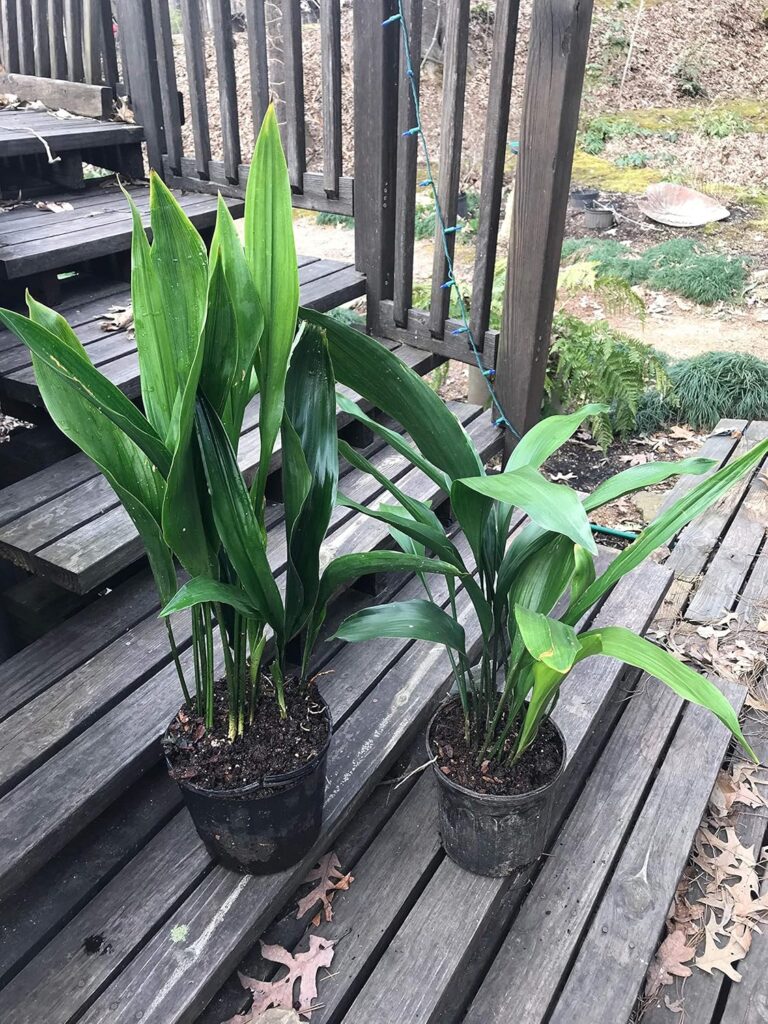
True to its name, the cast iron plant is nearly indestructible and a perfect choice for low-light, low-maintenance spots. Its dark green, strap-like leaves lend a classic look to foyers and hallways. It grows slowly, which means it won’t outgrow its space quickly or need frequent repotting. The plant tolerates dust, dry air, and sporadic watering better than most. It’s a quiet, unfussy addition that brings understated greenery to shadowy corners.
Cast iron plants were popular in Victorian homes and continue to lend classic elegance to interior decor. Their slow, steady growth makes them ideal for long-term indoor landscaping. These plants are great under large furniture or desks, where other plants would struggle. Their dark green color contrasts well with lighter furnishings or decor palettes.
- Care Tips: Water when dry; can tolerate neglect and low light.
- Benefits: Very hardy, thrives in almost any condition.
8. Chinese Evergreen (Aglaonema spp.)
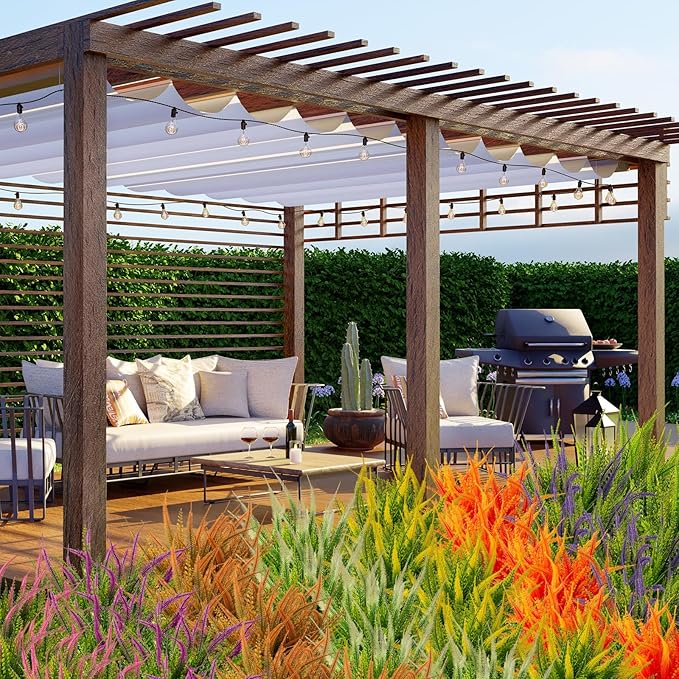
Chinese evergreens are prized for their colorful foliage, which may include shades of red, silver, or pink. They add vibrancy to dim areas that might otherwise feel dull. These plants also perform well in artificial lighting, making them perfect for interior offices or windowless rooms. Some varieties are particularly tolerant of dry air, which suits heated homes in winter. Their sculptural leaves help soften harsh lines in modern decor.
Chinese evergreens are often used in office lobbies or hotel rooms due to their ease of care and decorative appeal. They tolerate dry air from heaters or air conditioners better than most plants. Some varieties have a pink or red tint, offering a rare splash of color for low-light areas. Their bold patterns complement modern or eclectic interiors.
- Care Tips: Water when the top layer of soil dries out; prefers humidity.
- Benefits: Offers striking foliage and comes in a variety of colors.
9. Dracaena (Dracaena spp.)

Dracaenas are excellent statement plants due to their tall stature and bold leaf patterns. Varieties like ‘Marginata’ or ‘Lemon Lime’ bring striking contrast to otherwise neutral interiors. They’re easy to train into attractive shapes by trimming or braiding their stalks. These plants thrive in medium to low light, and many varieties tolerate dry indoor air. A single Dracaena can fill an empty corner with elegance and height.
Dracaenas work beautifully as floor plants in decorative ceramic or fiberglass planters. Their upright form makes them great space dividers or accents beside furniture. They’re known to help remove indoor toxins like xylene and trichloroethylene. Rotate the plant every few weeks to maintain even growth toward light.
- Care Tips: Water when soil dries out; tolerates low light but not cold.
- Benefits: Varieties with unique shapes and colors enhance decor.
10. Bamboo Palm (Chamaedorea seifrizii)
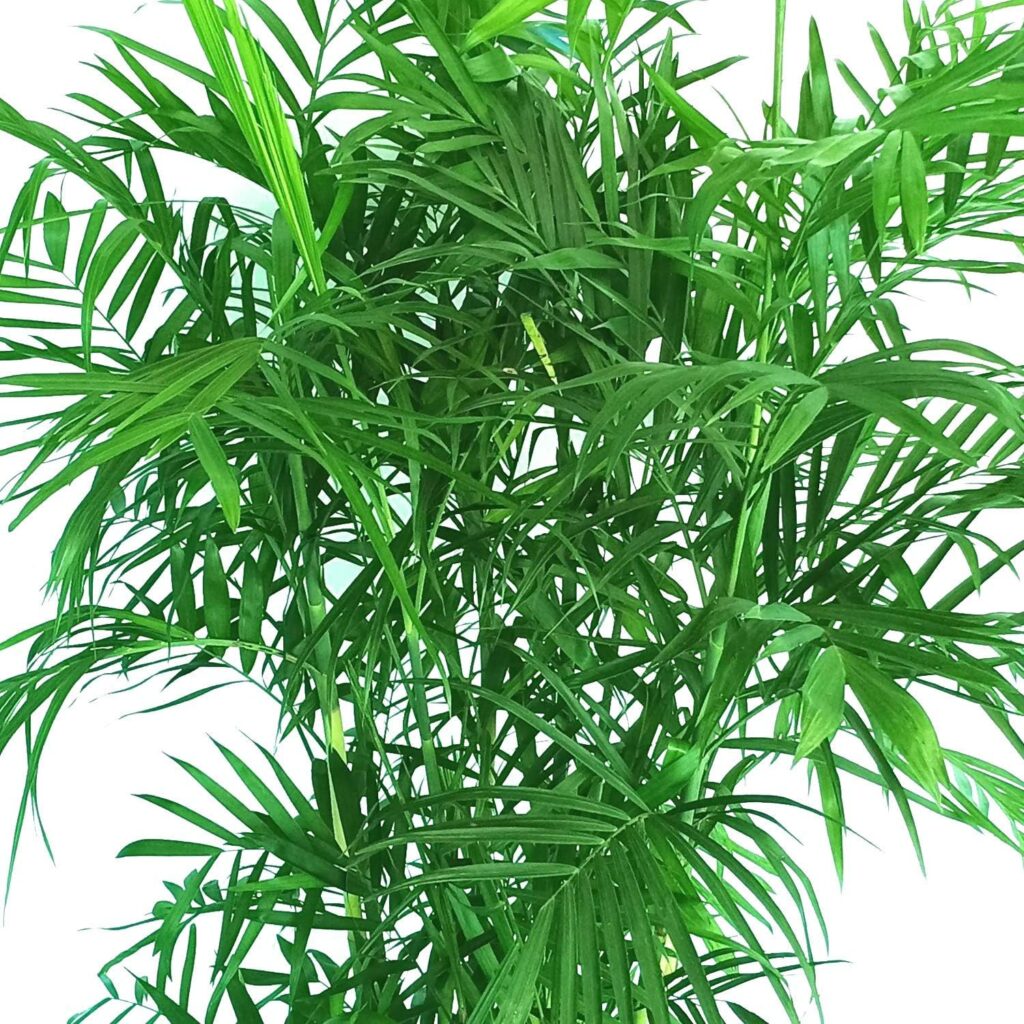
Bamboo palms lend a breezy, tropical ambiance that works well in sunrooms, entryways, or near reading chairs. Their feathery fronds create a sense of movement and softness in a room. These palms also help humidify dry indoor air, benefiting both people and nearby plants. They grow well in pots and tolerate being root-bound, so repotting is infrequent. Their lush, fountain-like shape complements coastal or bohemian styles beautifully.
The bamboo palm has a naturally airy, clumping growth habit that mimics small palm groves. It complements boho, coastal, and tropical decor themes effortlessly. Group it with other humidity-loving plants like ferns or calatheas for a lush indoor jungle. The plant’s roots prefer to stay slightly crowded, making it low maintenance for repotting.
- Care Tips: Water when the soil is dry to the touch; prefers humidity.
- Benefits: Adds a tropical feel and is excellent for air purification.
11. Parlor Palm (Chamaedorea elegans)
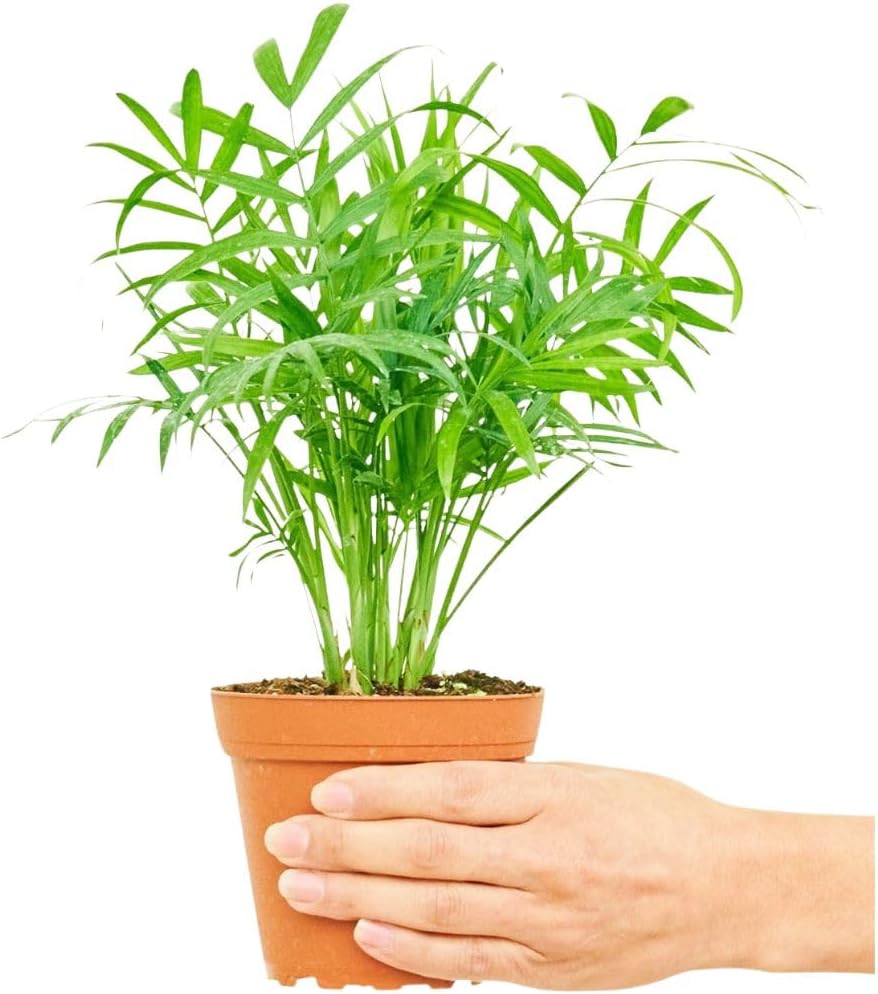
Once a Victorian-era favorite, the parlor palm still graces interiors with its timeless, elegant form. It stays relatively compact, making it suitable for tabletops or side stands. The fronds grow slowly but develop into graceful fans that sway gently in indoor breezes. It’s also non-toxic to pets, adding peace of mind for families. The parlor palm is especially charming when paired with antique or vintage-style decor.
This compact palm is ideal for apartments or bedrooms with filtered light. It’s a slow grower but rewards patience with a full, fan-like appearance over time. Parlor palms are often paired with antique pots or brass planters to highlight their vintage charm. They are also among the best palms for beginners due to their forgiving nature.
- Care Tips: Water when dry; does well in low light and needs minimal care.
- Benefits: Elegant appearance makes it a popular choice for indoor spaces.
12. Ferns (e.g., Boston Fern)
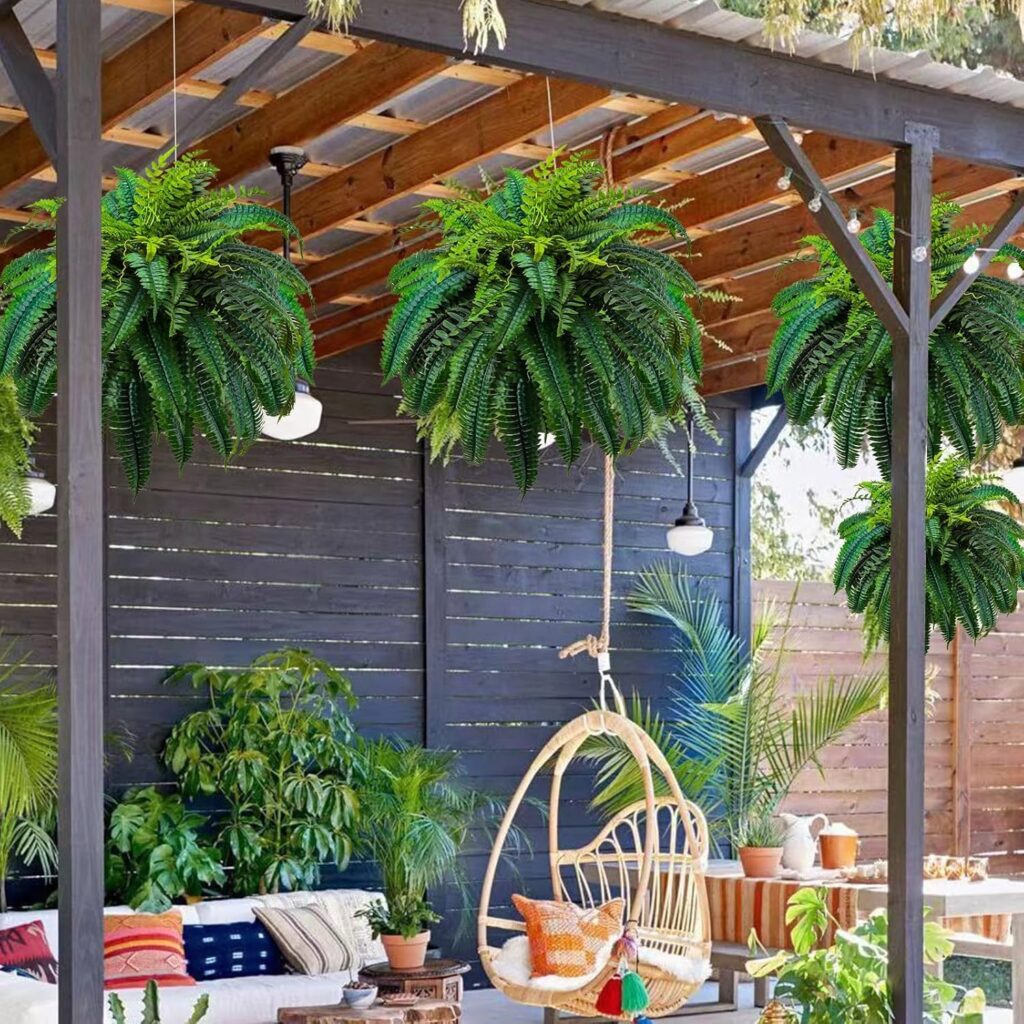
Boston ferns thrive in humid spaces like bathrooms or kitchens, where their lush fronds can flourish. Their finely divided leaves add softness and movement, especially when placed in hanging baskets. They’re sensitive to dry air, so occasional misting or a humidifier is beneficial. With proper care, they can grow into impressive specimens that fill their surroundings. Ferns are ideal for rustic or cottage-style interiors.
Ferns like the Boston fern are especially attractive in pedestal planters that allow their fronds to spill outward. They’re excellent in groupings with mosses and moisture-loving tropicals. When well cared for, they create a lush, almost rainforest-like ambiance indoors. Ferns can also help regulate humidity levels in the home.
- Care Tips: Keep soil moist and provide humidity; prefers indirect light.
- Benefits: Lush foliage adds texture and a natural feel to any room.
13. Rubber Plant (Ficus elastica)
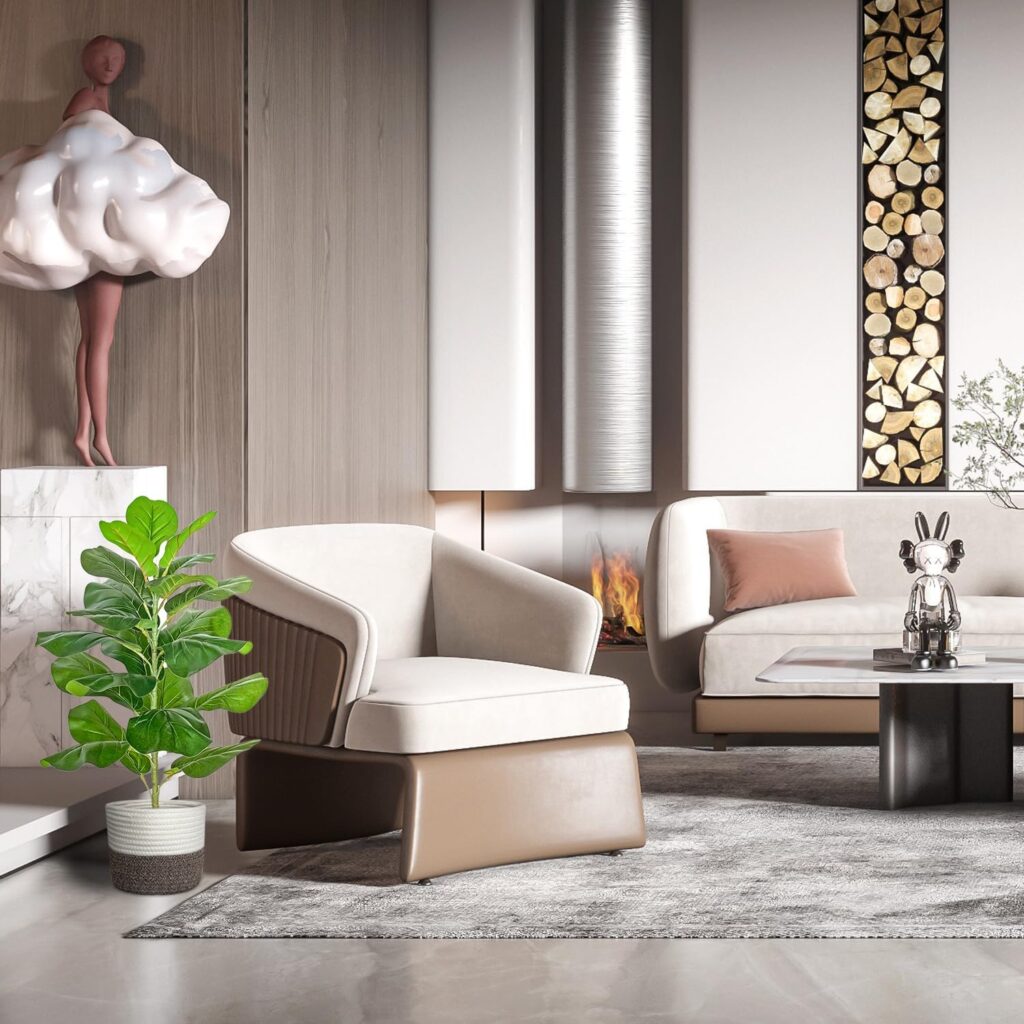
Rubber plants offer dramatic, glossy foliage that commands attention in any room. They grow upright and can be pruned to maintain a compact shape or encouraged to reach ceiling height. The leaves come in deep green, burgundy, or variegated varieties, providing options for different color schemes. They’re particularly stunning in modern or industrial spaces. Their sturdy nature and bold presence make them a favorite among interior designers.
Rubber plants look stunning in minimalist interiors with white or black decor as their dark leaves provide bold contrast. They’re particularly eye-catching in tall planters near windows or French doors. The plant has a calming, grounded presence and works well in reading nooks or libraries. It symbolizes abundance and wealth in some cultures.
- Care Tips: Water when the top inch of soil dries; prefers bright indirect light.
- Benefits: Large, glossy leaves that can add a dramatic touch.
14. Corn Plant (Dracaena fragrans)
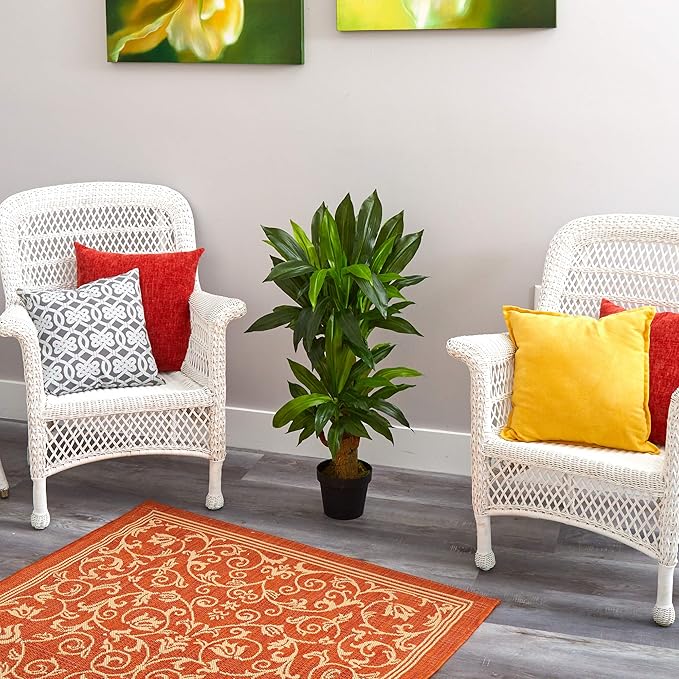
The corn plant’s long, arching leaves and tree-like trunk give it a tropical yet structured look. It adds height and greenery to areas where other plants might appear cluttered. The plant emits a sweet scent when in bloom, though flowering indoors is rare. It works beautifully in corners of living rooms, offices, or behind sofas. Its resilience to neglect makes it an easy-care focal piece.
With its striped, sword-shaped leaves, the corn plant is a stylish anchor for empty corners. It’s often used in professional settings for its low upkeep and dramatic form. This plant tolerates indoor lighting changes well, making it ideal for frequently rearranged rooms. Pair it with neutral-colored pots to let its foliage shine.
- Care Tips: Water when the soil is dry; thrives in bright, indirect light but can tolerate lower light.
- Benefits: Tall, architectural form can fill empty corners beautifully.
15. Lucky Bamboo (Dracaena sanderiana)
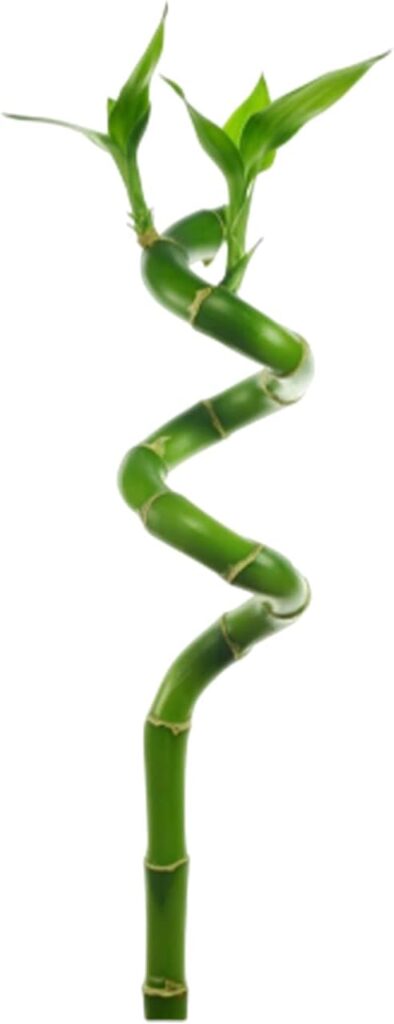
Lucky bamboo is often grown in water-filled glass vases with decorative stones, offering a modern, Zen-like appeal. It can be shaped into spirals or braids, adding artistic flair to desktops or countertops. This plant is often used in feng shui to attract positive energy. It’s also one of the easiest plants to care for, needing only occasional water changes. Its symbolism and visual appeal make it a thoughtful gift.
Lucky bamboo is commonly used in Feng Shui to promote harmony and balance. The number of stalks is said to determine the kind of luck it brings—three for happiness, five for health, and eight for wealth. It looks elegant in glass containers with pebbles and water. This makes it an ideal desktop or shelf accent.
- Care Tips: Keep in water or moist soil; prefers indirect light.
- Benefits: Symbolizes good fortune and prosperity.
16. Nerve Plant (Fittonia spp.)
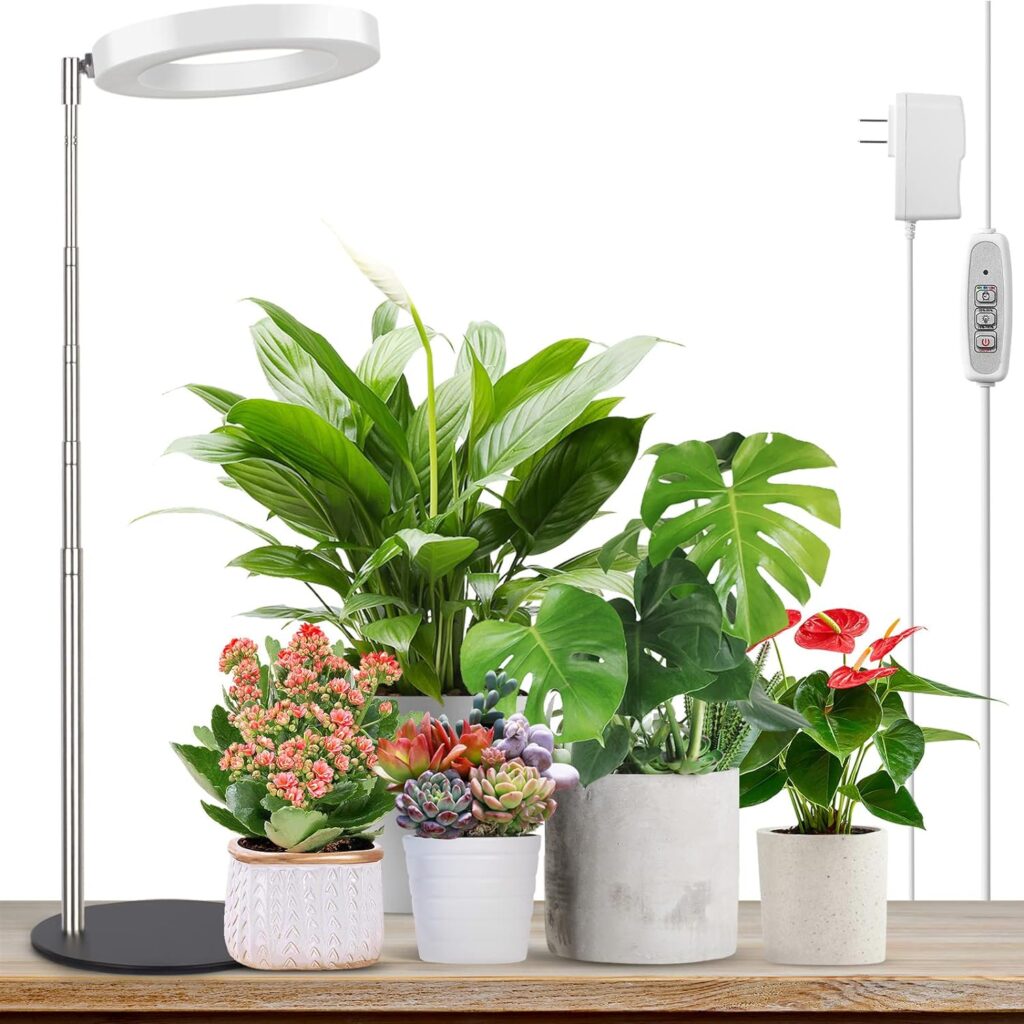
Nerve plants are compact and ideal for terrariums or small pots on desks and windowsills. Their vibrant leaf veins—often white, pink, or red—provide a pop of color against green backdrops. They need consistent moisture and humidity but are worth the extra care. These plants are particularly charming when grouped with other moisture-loving companions. Their intricate patterns make them favorites for decorative plant displays.
Nerve plants shine brightest in terrariums where humidity and temperature are more controlled. Their intricate vein patterns contrast well against moss and miniature tropicals. They can be finicky but reward care with vibrancy and charm. Fittonias are perfect for plant lovers who enjoy close-up beauty and small-scale gardening.
- Care Tips: Keep soil consistently moist and provide high humidity.
- Benefits: Stunning leaf patterns add visual interest.
17. Christmas Cactus (Schlumbergera spp.)
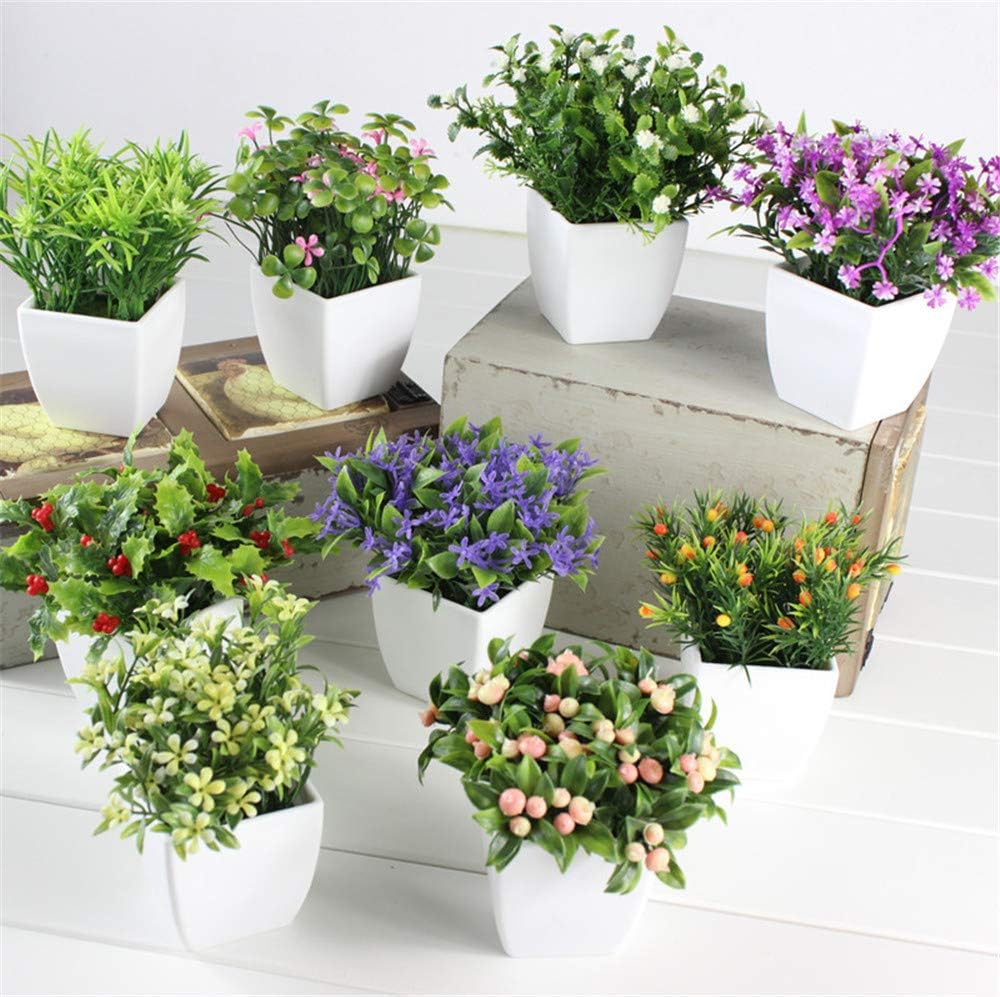
Christmas cacti bloom during the colder months, providing cheerful color when most plants are dormant. The segmented, trailing stems look great in hanging pots or high shelves. With proper care, these cacti can live for decades, becoming heirloom plants. They’re sensitive to drastic changes in light or temperature, so stable placement is key. These plants thrive on consistency and offer a festive presence during the holidays.
Christmas cacti are beloved for their long lifespan and are often passed down through generations. They thrive in bright bathrooms or sunny windowsills where indirect light is plentiful. When not blooming, their green segments still provide visual interest. They’re also easy to propagate by snapping off a segment and letting it root in soil or water.
- Care Tips: Water when soil is dry; prefers bright, indirect light.
- Benefits: Blooms beautifully in winter, bringing color to dreary months.
18. Money Tree (Pachira aquatica)
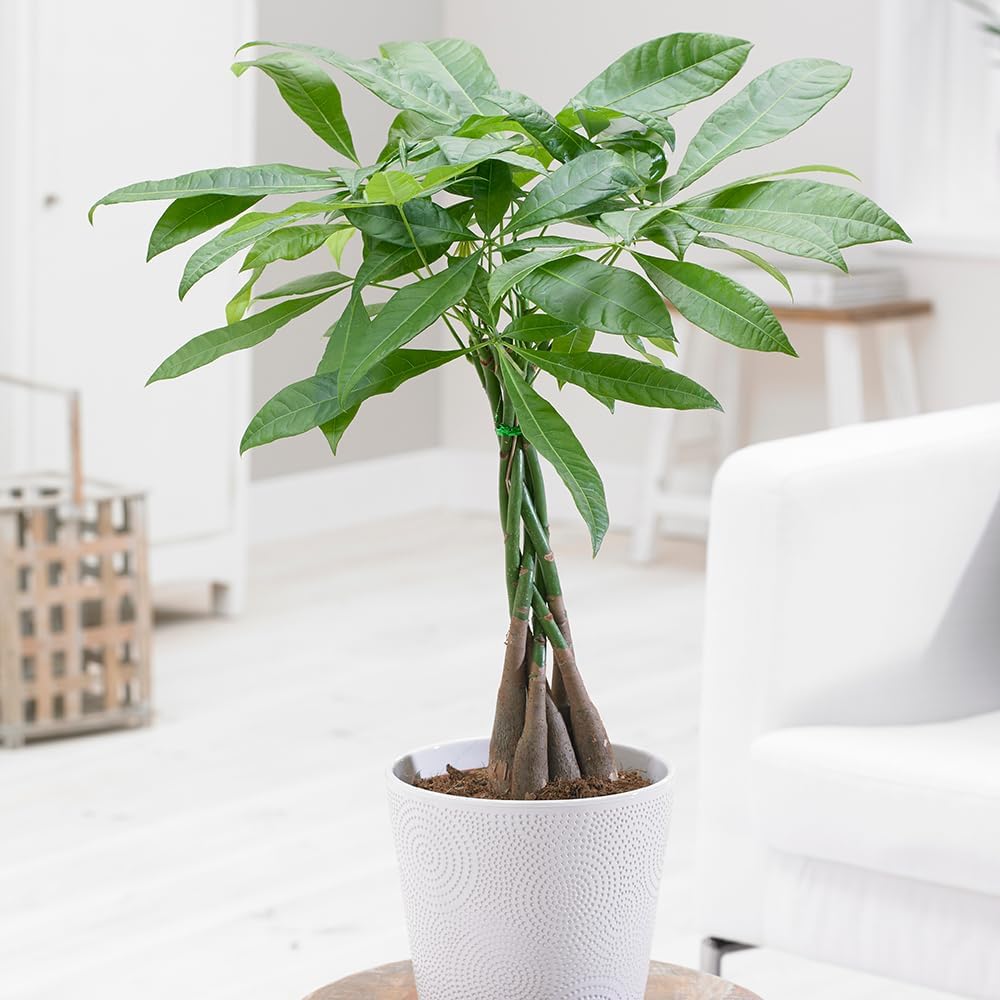
Money trees often come with braided trunks and broad, glossy leaves that symbolize growth and good fortune. They can grow several feet tall, making them ideal for floor placement. These trees enjoy occasional misting to replicate their natural humid environment. While they prefer bright light, they adapt well to low-light conditions indoors. Their attractive form and positive associations make them a staple in homes and offices.
The money tree’s braided trunk and leafy canopy add height and elegance to living rooms or office spaces. In feng shui, it’s believed to bring prosperity when placed in the southeast corner of a room. It thrives near bright windows with sheer curtains to filter the light. Its roots prefer slightly moist but well-drained soil.
- Care Tips: Water when the top 1-2 inches of soil are dry; prefers indirect light.
- Benefits: Believed to bring good luck and prosperity.
19. Prayer Plant (Maranta leuconeura)
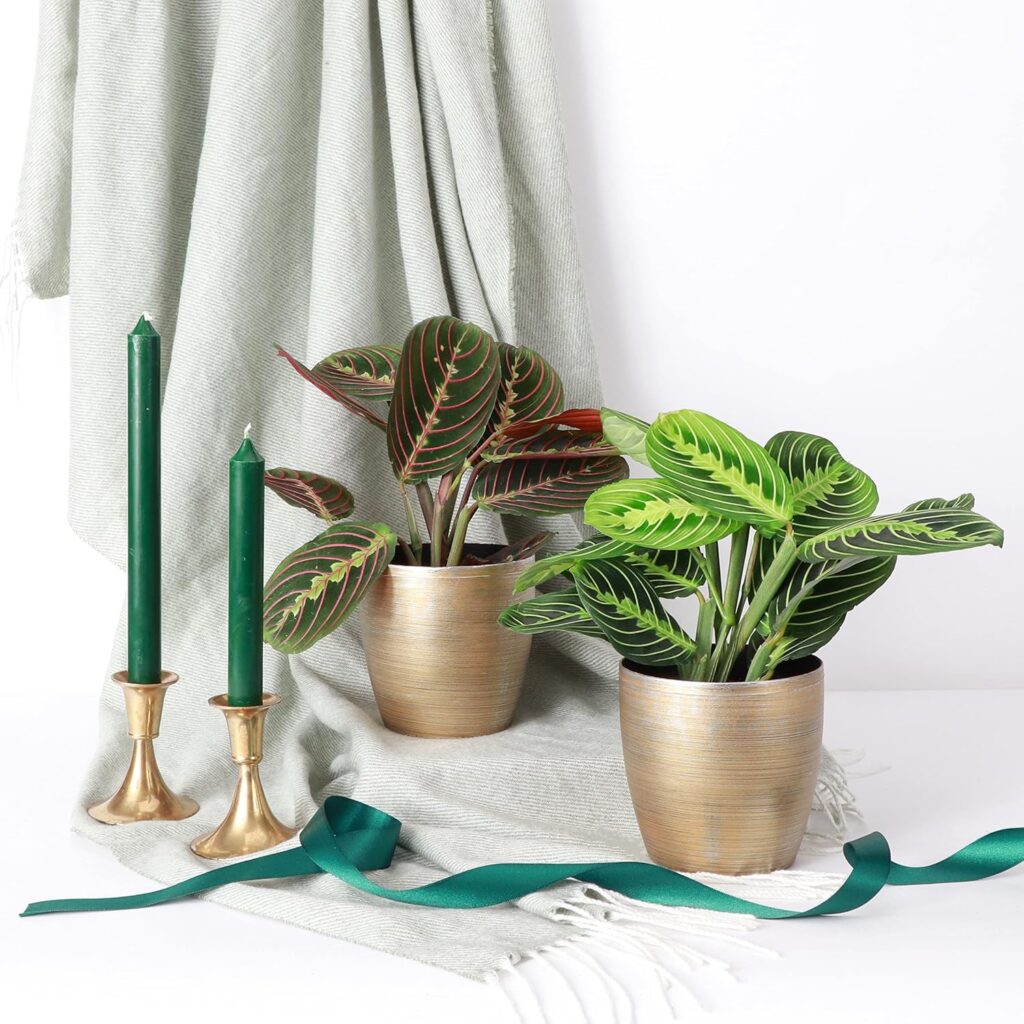
Prayer plants are named for their habit of folding their leaves upward at night, resembling praying hands. This movement, called nyctinasty, adds an engaging, dynamic element to your plant collection. Their striking patterns and color combinations make them stand out in any plant display. They perform best with regular humidity and filtered light. These plants do well in terrariums or grouped with other tropical varieties.
Prayer plants are excellent conversation starters due to their nightly “prayer” movements. They look great in shallow pots where their low growth habit can spread. Their leaf patterns are reminiscent of brushstrokes, making them feel like living art. Group them with other Marantaceae like Calatheas for a dramatic effect.
- Care Tips: Keep soil moist; prefers humidity and indirect light.
- Benefits: Unique leaf movement adds a dynamic quality to your space.
20. Kalanchoe (Kalanchoe spp.)

Kalanchoes are succulents that bloom in vibrant reds, pinks, yellows, and oranges, adding joyful color indoors. They require minimal care and infrequent watering, thriving in bright but indirect light. The blooms can last several weeks, offering prolonged enjoyment. Their compact form makes them suitable for windowsills, tabletops, or office desks. Kalanchoes are also easy to propagate from leaf cuttings.
Kalanchoes are often sold during winter months as cheerful indoor bloomers. After flowering, the spent blooms can be trimmed to encourage new growth. These plants can handle dry spells, making them ideal for sunny windows. Their vibrant blooms make them suitable for brightening up kitchen counters or side tables.
- Care Tips: Water when the soil is dry; needs bright indirect light.
- Benefits: Produces colorful blooms, adding cheer to your home.
21. Pencil Cactus (Euphorbia tirucalli)

Pencil cactus is a striking plant with thin, upright branches resembling green sticks or coral. It brings a sculptural, minimalist look to modern interiors. Though it needs bright light to thrive, it can adapt to moderate indoor conditions. Caution is needed as the sap can be irritating—place it away from pets and children. It’s an excellent choice for plant enthusiasts looking for a bold, unusual form.
The pencil cactus’s abstract shape makes it look like modern sculpture. It’s ideal for minimalist or desert-themed interiors. Although technically not a true cactus, its care is similar—less is more. Keep it in a bright spot away from direct touch due to the skin-irritating sap.
- Care Tips: Allow soil to dry out completely between waterings; prefers bright indirect light.
- Benefits: Unique, sculptural appearance makes it a conversation starter.
22. Jade Plant (Crassula ovata)
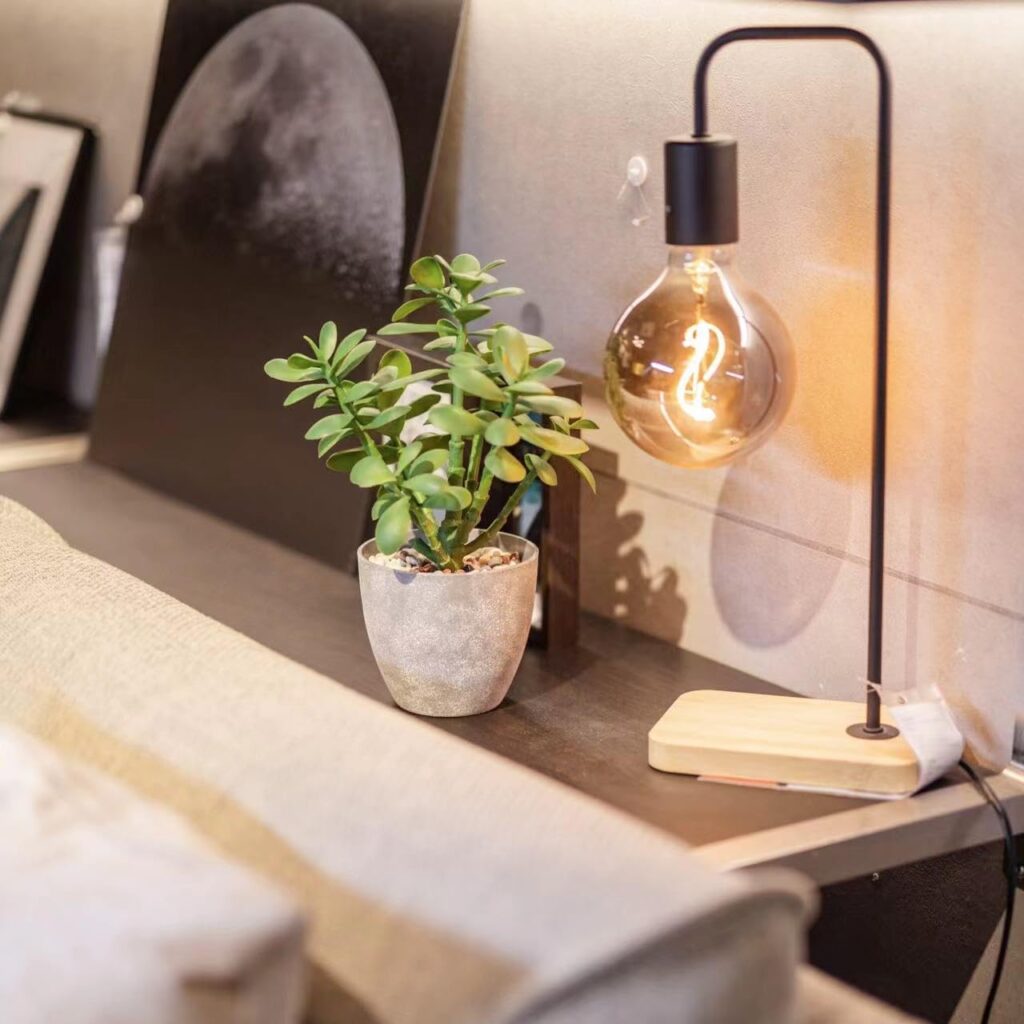
Jade plants are known for their thick, fleshy leaves and tree-like appearance. They’re a symbol of prosperity and often given as housewarming gifts. Jade thrives with little attention and stores water in its leaves, making it drought-tolerant. It can be pruned into bonsai-like shapes, enhancing its decorative value. This succulent pairs well with ceramic or terra cotta pots in sunlit areas.
Jade plants develop a tree-like trunk over time, making them look more like bonsai with age. They can live for decades with the right care and even bloom small white flowers indoors. Their thick leaves store water, allowing them to go long stretches without attention. They’re often placed near entrances or windows to attract positive energy.
- Care Tips: Water when the soil is dry; prefers bright indirect light.
- Benefits: Symbolizes good luck and can grow into a large, beautiful plant.
Conclusion
Incorporating low-light indoor plants into your home is an excellent way to enhance your living environment. From improving air quality to boosting your mood, the benefits are manifold. With the right selection of plants, even the dimmest corners of your home can become vibrant, lush spaces.
Whether you opt for a hardy snake plant, a trailing pothos, or a decorative peace lily, these 22 low-light plants will thrive and beautify your surroundings. So why wait? Start your indoor garden today and enjoy the refreshing and revitalizing power of nature right at home!

